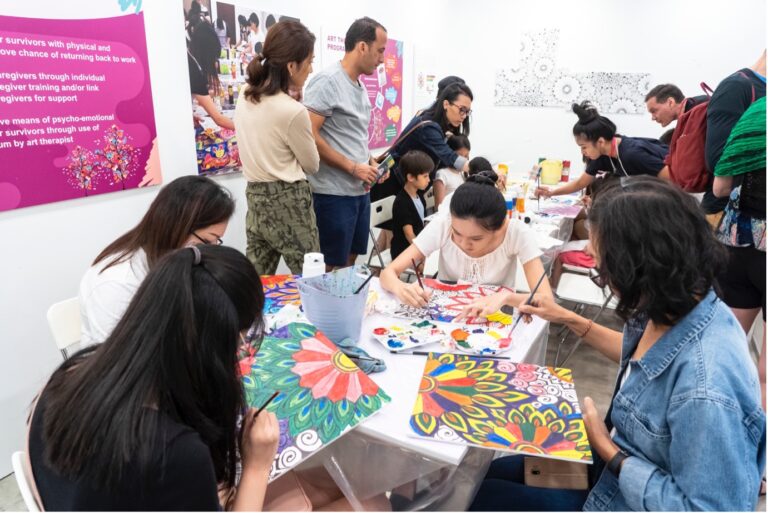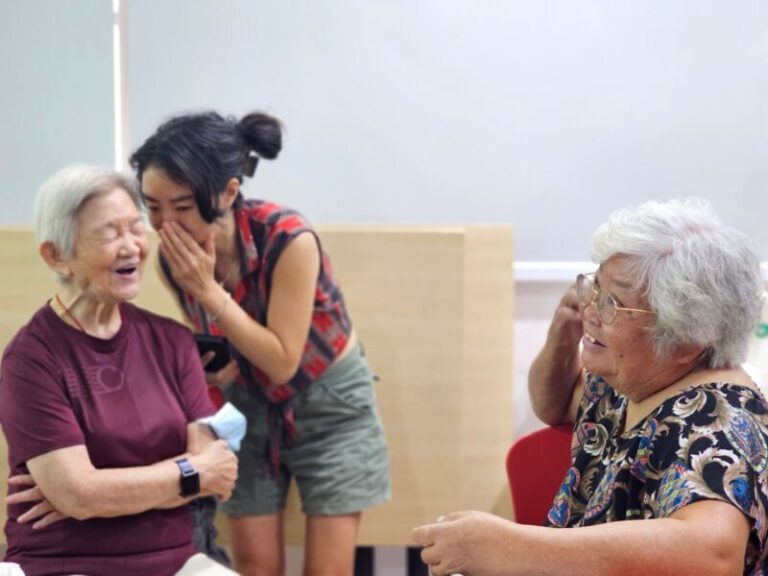There is much to think about whenever one thinks of art festivals—the works, the artists, the galas—but mention the places, the physical spaces in which these things occur or are placed, and it is likely that such talk will draw a blank from festival goers. The more common spatial considerations tend to concern those of amenities, especially if a venue has them in terrible or absent states (Read: No toilet?! What were the organizers thinking???)
Seldom is it the case when an actual location matters as much as the works on display. In scenarios where venues do get mentioned, this is often because they are 1) placed directly within the name of the festival and/or 2) happen to be a major location sponsor or the actual organizer of the event.
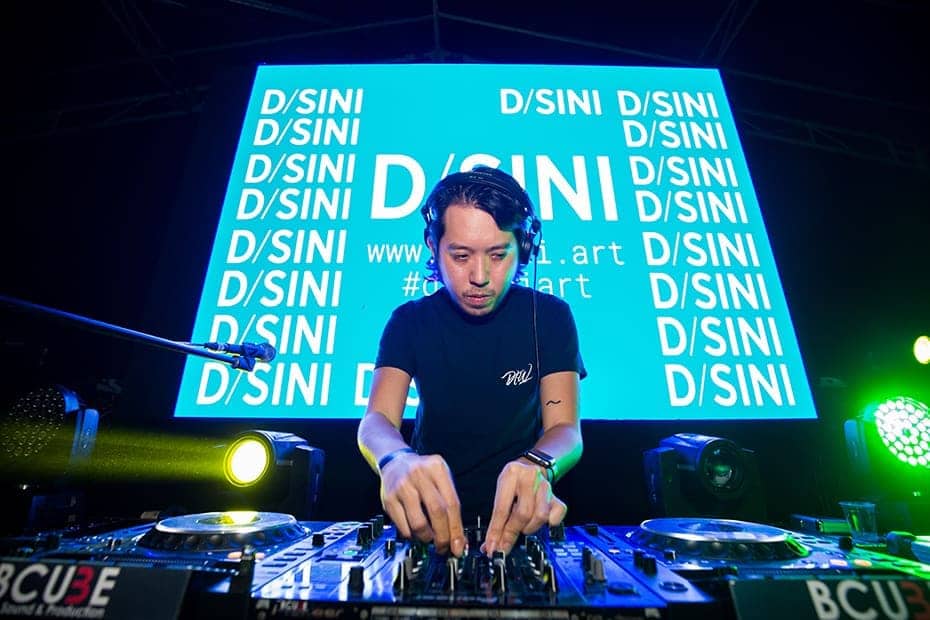
D/SINI (literally di sini, Malay for ‘over here’) is one festival organised by Chan + Hori Contemporary that attempts to upend all of the above notions. Inviting creators and consumers to consider the impact of the spaces in which histories, contexts and artworks are framed, the festival seeks to explore the ways through which connections and attachments are formed, especially when facilitated by something as important yet unnoticed as physical location.
Gillman Barracks, the precinct which houses Singapore’s art enclave and the epicentre of the D/SINI festive sprawl, plays host to this particular event. As known by many, it was a site of colonial military power, housing British officers from 1936 to 1971. Upon the withdrawal of British forces from Singapore after World War II, the area passed into the hands of the Singapore military, being the place where drivers and engineers were trained before they moved on to other military locations. After its use by the military came to an end, the area remained in relative obscurity. It was largely inaccessible, until the government’s extensive redevelopment of the entire district to facilitate the creation of a modern Singaporean contemporary art centre.
In a similar vein, the peripherals of Gillman Barracks—composed of nearby landmarks and areas of interest such as Haw Par Villa, the site of the Dragon’s Teeth Gate (before it got blown up in 1848 to make way for bigger ships), and Labrador Park—have their own places in Singaporean public histories. They serve as inspiration for both artists and audiences alike and have their own cache of memories and cultural significance in the eyes of Singaporean society.
Interestingly, D/SINI itself heavily features practitioners beyond the domain of contemporary art—with parties and even yoga sessions in the works, in order to genuinely integrate a sense of organic rapport between participants and the artistic community.
Here’s a look at some of the cool D/SINI works that intrigued us — we hope they will intrigue you too:
1. Anon Pairot, No Country for Tomorrow (2017)
A surprising combination of flag-poles, seesaws, and desktop screenshots, the Thai artist Anon Pairot’s work cuts through the depersonalized presentations of self in cyberspace, allowing viewers to hop on and off his seesaw. It allows for a childlike reversion to playful joy, as participants interact with one another over a children’s game.
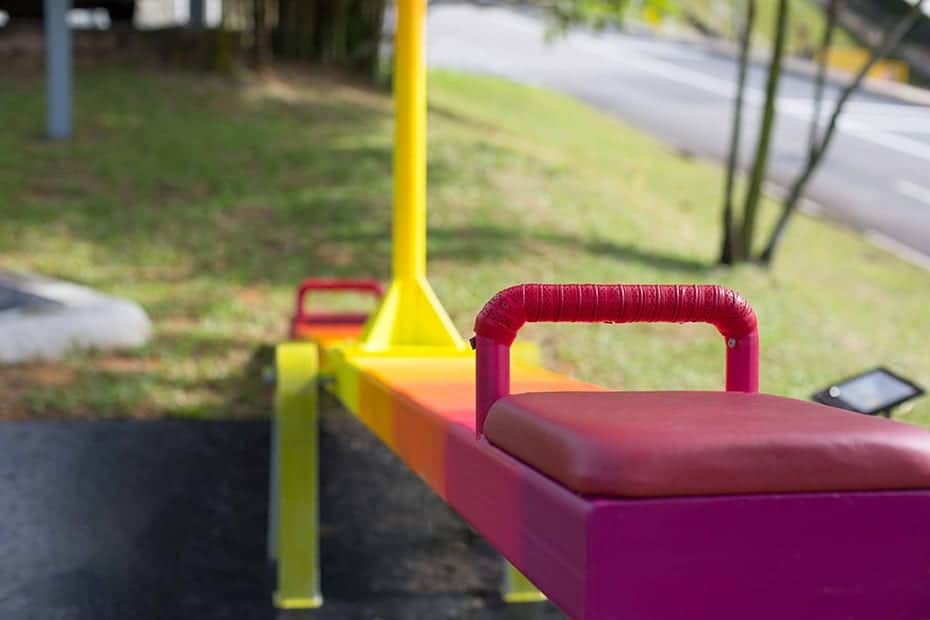
Fluid and participatory, the piece is a fun take on how audiences may interpret the work, based on their actual physical responses to it — a far cry from the traditionally austere and often obtuse presentation one expects from contemporary art installations.

2. Felipe Pantone, Chromodynamica for Singapore (2018)
Vivid and contrasting, Argentinian visual artist Felipe Pantone’s work combines his interest in the mutability of form and colours, with the outer walls of a gallery space – a combination that is especially prevalent in his practice of street art and kinetic art:
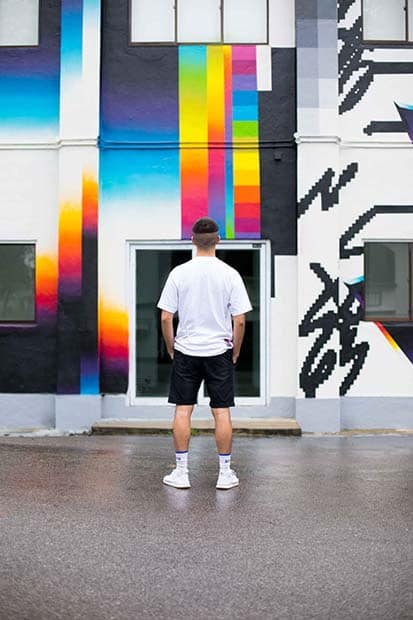
3. Kamin Lertchaiprasert, The Ground (2018)
A familiar name and a regular fixture in the Southeast Asian art scene. Those who attended Art Stage 2018 might recall Kamin’s work The Timeless Present Moment, where a cast replica of the artist sat cross-legged before an installation of 365 tea bowls.
In The Ground, Kamin’s largest work to date, the artist’s personal paper waste was collected over a period of 17 years to amass enough materials to create an 8m-tall sculpture in three parts: a tree trunk, an elephant and the artist himself meditating once more. The piece was recently unveiled this past weekend: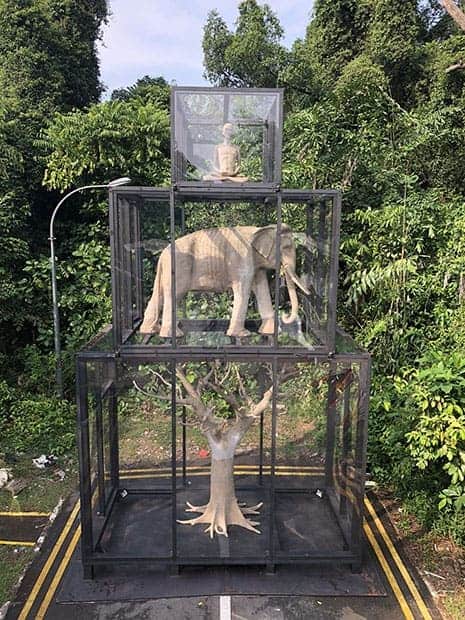
Magisterial and austere, the work follows the predominant themes in Lertchaiprasert’s canon of spirituality and peace, and heavily questions the interference that excessive consumption imposes on the natural order of things.
4. Maya Rochat, A Rock is a River (2017)
Swiss artist Maya Rochat brings us back to the question of toilets in arts festivals with her installation A Rock is a River. Texture reigns in her site-specific work which in this case, is located in a humble bathroom in Gillman Barracks.
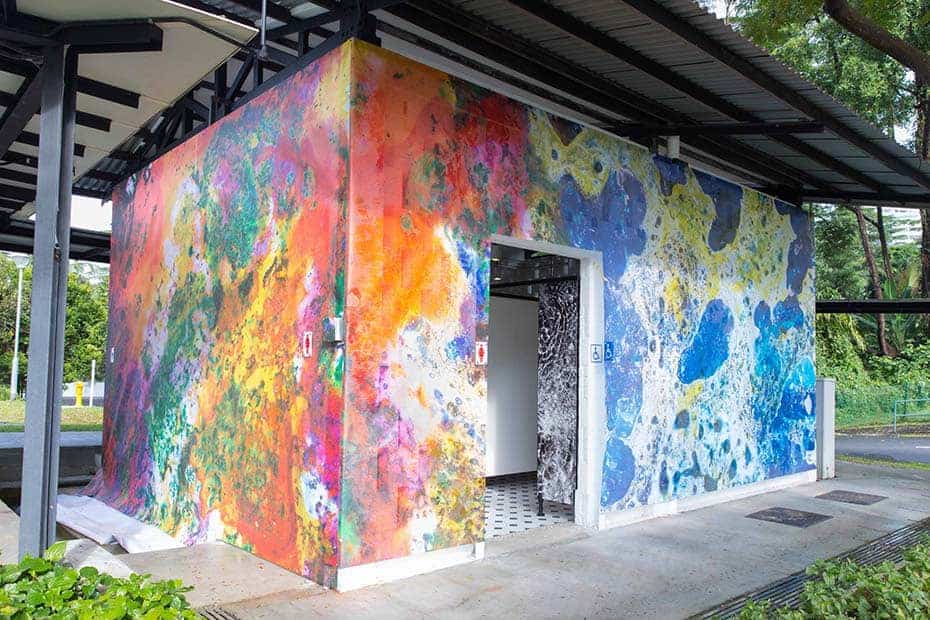
Featuring images inspired by natural phenomena that are manipulated and distorted, Rochat plays with a space that is both public and intimate by bringing into question the forms of the walls and boundaries themselves.
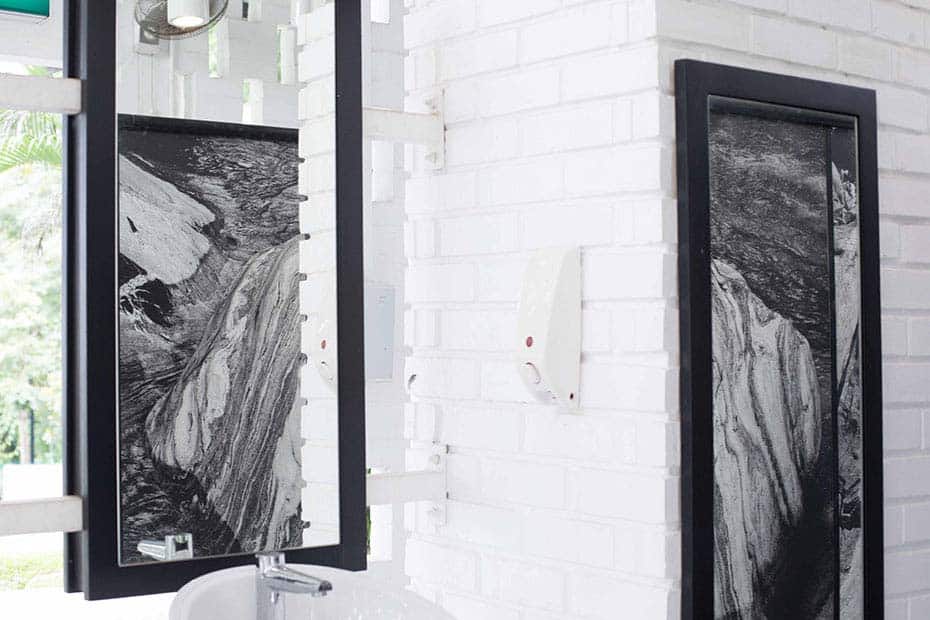
While you’re on the throne and regardless of whether you’re emitting (ahem) personal rocks or rivers, it’s all really quite something to ponder!
D/SINI runs until 26 September 2018.
*Si simi refers to the Singlish/ Hokkien term for “what?”
All images courtesy of Chan + Hori Contemporary.








